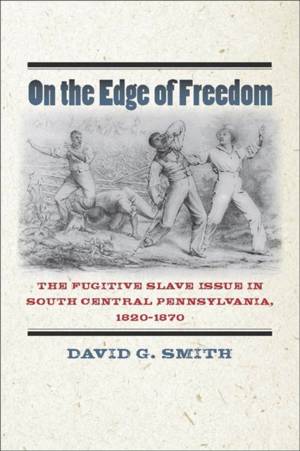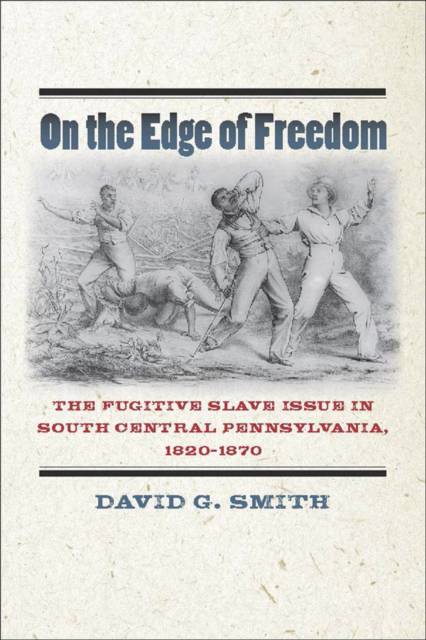
- Retrait gratuit dans votre magasin Club
- 7.000.000 titres dans notre catalogue
- Payer en toute sécurité
- Toujours un magasin près de chez vous
- Retrait gratuit dans votre magasin Club
- 7.000.000 titres dans notre catalogue
- Payer en toute sécurité
- Toujours un magasin près de chez vous
On the Edge of Freedom
The Fugitive Slave Issue in South Central Pennsylvania, 1820-1870
David G Smith
120,95 €
+ 241 points
Format
Description
An engagingly written, meticulously documented study of antislavery ferment just north of the Mason-Dixon line in a region of geographical, economic, cultural, and historical "edges". In On the Edge of Freedom, David G. Smith breaks new ground by illuminating the unique development of antislavery sentiment in south central Pennsylvania-a border region of a border state with a complicated history of slavery, antislavery activism, and unequal freedom. During the antebellum decades every single fugitive slave escaping by land east of the Appalachian Mountains had to pass through the region, where they faced both significant opportunities and substantial risks. While the hundreds of fugitives traveling through south central Pennsylvania (defined as Adams, Franklin, and Cumberland counties) during this period were aided by an effective Underground Railroad, they also faced slave catchers and informers. "Underground" work such as helping fugitive slaves appealed to border antislavery activists who shied away from agitating for immediate abolition in a region with social, economic, and kinship ties to the South. And, as early antislavery protests met fierce resistance, area activists adopted a less confrontational approach, employing the more traditional political tools of the petition and legal action. Smith traces the victories of antislavery activists in south central Pennsylvania, including the achievement of a strong personal liberty law and the aggressive prosecution of kidnappers who seized innocent African Americans as fugitives. He also documents how their success provoked Southern retaliation and the passage of a strengthened Fugitive Slave Law in 1850. The Civil War then intensified the debate over fugitive slaves, as hundreds of escaping slaves, called "contrabands" sought safety in the area, and scores were recaptured by the Confederate army during the Gettysburg campaign. On the Edge of Freedom explores in captivating detail the fugitive slave issue through fifty years of sectional conflict, war, and reconstruction in south central Pennsylvania and provocatively questions what was gained by the activists' pragmatic approach of emphasizing fugitive slaves over immediate abolition and full equality. Smith argues that after the war, social and demographic changes in southern Pennsylvania worked against African Americans achieving equal opportunity, and although local literature portrayed this area as a vanguard of the Underground Railroad, African Americans still lived "on the edge of freedom." By the 1920s, the Ku Klux Klan was rallying near the Gettysburg battlefield, and south central Pennsylvania became, in some ways, as segregated as the Jim Crow South. The fugitive slave issue, by reinforcing images of dependency, may have actually worked against the achievement of lasting social change.
Spécifications
Parties prenantes
- Auteur(s) :
- Editeur:
Contenu
- Nombre de pages :
- 344
- Langue:
- Anglais
- Collection :
Caractéristiques
- EAN:
- 9780823240326
- Date de parution :
- 10-10-12
- Format:
- Livre relié
- Format numérique:
- Ongenaaid / garenloos gebonden
- Dimensions :
- 157 mm x 234 mm
- Poids :
- 589 g







